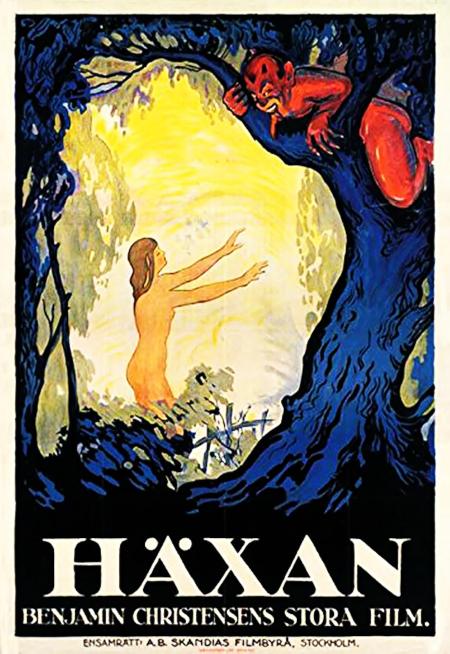Rating of
4/4
Between Horror and Documentation
cacb3995 - wrote on 10/09/18
Danish director Benjamin Christensen in 1921 took the subject of witchcraft and confected a film experience around it to explore it as a historical phenomenon and see how it relates to the then present. This film defies simple categorization: is it a documentary? a horror film? a docu-fiction? a film essay? I’d go with that one. And indeed the film is experimental and unconventional in the way it is presented, but in truth Christensen wasn’t concerned with revolutionizing the form or medium, but rather exploring the ramifications and implications of a certain historical moment in a very essayistic fashion (even when many of the events are being dramatized). The result, however, does in a sense trascend this “academic” function and becomes both, an interesting study of a historical event and a very effective horror film. Actually, “Häxan: Witchcraft Through the Ages” could very well be one of the most accomplished horror films out there, much better than the majority of what we become nowadays, which is funny because it was never intended to be one in the first place.
“Häxan” is divided into seven parts and explores witchcraft and superstition in the middle ages. At first we see how believes like hell, the devil, pagan practices and even early depictions of the solar system were understood in early civilizations and the middle ages. It is then followed a series of vignettes that dramatize certain practices that were believed to be related to witchcraft and inspired by Satan himself. We then see how church-sponsored witch hunts played out, focusing on an old woman falsely accused of being a witch, who after being severly tortured admits to several accounts of witchcraft and dennounces other supposed witches, and a young maiden who after one encounter with a monk is believed to also be a witch. This section takes up the majority of the film and is the one that more closely resembles a traditional narrative film. The seventh and last section focuses on the pathological rather than the supernatural, and it depicts Christensen’s actual thesis and what I believe to be the main reason behind this film: it shows how all these superstitions of the middle ages could be rooted by a lack of understanding of mental illnesses, and how in the society of the 1920s (though I don’t think its any different today, almos 100 years later), in which we supposedly understand this topics way better and claim pride because of how we’ve distanced ourselves from medieval practices such as the inquisition, there’s still a stigma around mentally ill people, and while we’re not drowning them or burning them on a pyre we still segregate them from the rest of society for not being “normal”.
Full review at: https://breakingthefourthwallsite.wordpress.com/2018/10/09/haxan-between-horror-and-documentation/




